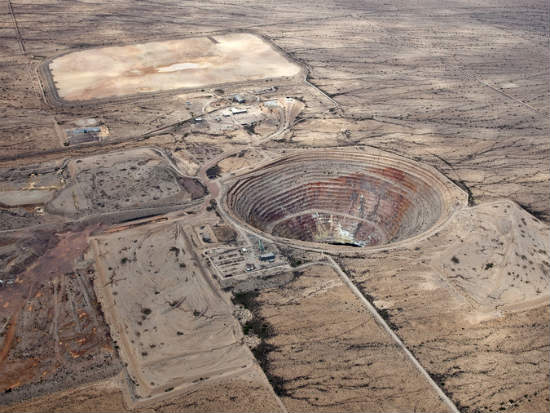Nuclear Power
On EcoWatch, Harvey Wasserman rounds up a bunch of recent articles and statements from sources ranging from Amory Lovins to Ralph Nader to, yes, GreenWorld, reflecting on the third anniversary of the beginning of the Fukushima disaster and what lies ahead for nuclear power.
An illegal radioactive waste dump has been discovered in a remote North Dakota town. The dump is a product of North Dakota’s oil and gas boom, and consists of radioactive “oil filter socks” used to filter fluids generated in oil production. Disposal of the socks is illegal in North Dakota, but just three weeks ago some open trailers full of the socks were found at a different location. This newest impromptu radwaste dump is twice as radioactive as the earlier one. Some 27 tons of the socks are produced in the state every day–meaning that the problem is only bound to increase.
A new NRC report, released today by Pennsylvania Senator Bob Casey, reveals that the Apollo radioactive waste dump in western Pennsylvania could contain far more radwaste than previously estimated. “The NRC said the former president of a company that made nuclear fuel at the site believes that the documents used for the current cleanup plan ‘grossly underestimate’ the material buried there. The site once produced nuclear fuel for submarines, and the waste there, buried in shallow trenches, includes plutonium and uranium.
Fukushima nuclear workers rally in Tokyo against Tepco over low pay, dangerous conditions. Does Tepco care about anyone?
Clean Energy

Next time you run into someone who tries to argue solar power is too expensive, show them this. The city of Austin, Texas has signed a 25-year contract to buy 150 Megawatts of solar power for only 5 cents per kilowatt/hour–believed to be the lowest price ever for solar power in the U.S. That’s a price most people in the northeast, midatlantic, midwest, hell, just about anywhere, would love to see on their electric bills. As the article points out, “If you removed the ITC (a federal tax credit for solar), the cost would probably be about 8¢/kWh. Still, that’s not bad. Austin Energy’s 30-year LCOE estimate for natural gas was 7¢/kWh, while the estimate for coal clocked in at 10¢/kWh and the estimate for nuclear at 13¢/kWh. Only wind—2.8¢/kWh to 3.8¢/kWh—was lower.
The head of the European Wind Energy Association delivered a speech in Barcelona this week pointing out that energy security on the continent can be better achieved by directing investment toward wind power (we would add solar power and energy efficiency as well). He made the comments in the context of the Ukraine crisis and emphasized “how present European governmental discomfort could have been alleviated if the bloc had been more aggressive in pursuing its renewable power potential instead of continuing to import fossil fuels from its eastern neighbor.” Andrew Garrad didn’t mince words: “Mr Putin can and perhaps will turn off the tap that supplies Western Europe with oil and gas but even Mr Putin bare chested, or fully clothed cannot turn off the tap that supplies our wind, our free indigenous fuel. It seems however that some politicians would rather line Mr Putin’s pockets than agree to an ambitious target for renewables for 2030.”

“Conflict-free” big solar. An Arizona company wants to build a large new solar plant on the site of an abandoned open pit copper mine 45 miles from Phoenix. The plant would consist of a 100 MW solar photovoltaic plant coupled with a 150 MW closed-loop pumped hydro storage facility. Some solar projects have been opposed by some environmentalists because they have been located in environmentally-sensitive areas, although typically solar companies are far more environmentally-sensitive than other energy production companies. But by siting a plant on land not particularly useful for other purposes, and already environmentally damaged, Green Energy Storage is trying to reach a “win-win” situation, one that can be applauded by environmentalists and power producers alike.
The American Council for an Energy Efficient Economy (ACEEE) has produced a new report finding that “deep energy retrofits” can reduce typical household energy use by 50%. Says Rachel Cluett of ACEEE, While this is an ambitious goal, considering that savings from the highest-performing residential retrofit programs top out at about 30%, it is increasingly feasible. New research and program experiences show savings of more than 50% of home energy use can be achieved through deep energy retrofit projects. Deep energy retrofits rely on significant upgrades to a home’s shell and mechanical systems to deliver much more comfortable, long-lasting, aesthetically pleasing, and low-energy houses.”
CleanTechnica reports on three new–and low-cost Department of Energy solar projects underway that “kick butt,” in their words. They also contrast these projects to the new “drill baby drill” mentality that says we should be producing more fossil fuels and sending them to Ukraine. Let’s send solar instead….
Which three European countries already have met their 2020 renewable energy commitments? Probably not the ones you think. Nope, not Germany or Austria (though it’s close, and has a sizable 35% renewable commitment). Try Sweden (already more than 50% renewable, primarily through hydropower), Bulgaria and Estonia–both mostly through the growth of wind power.
Uncategorizable…
Finally, from The Onion: It’s Sad Seeing How Much My Hometown Has Changed Since That Level 7 Nuclear Accident. You may not know whether to laugh or cry; you may do both….
Michael Mariotte
March 14, 2014
Permalink: https://www.nirs.org/2014/03/14/nuclear-newsreel-friday-march-14-2014/
Comments are welcome! Say your piece above. Start a discussion. Don’t be shy; this blog is for you.
If you like GreenWorld, you can help us reach more people. Just use the icons below to “like” our posts and to share them on the various social networking sites you use. And if you don’t like GreenWorld, please let us know that too. Send an e-mail with your comments/complaints/compliments to nirs@nirs.org. Thank you!
You can also now support GreenWorld with your tax-deductible contribution on our new donation page here. We gratefully appreciate every donation of any size–your support is what makes our work possible.
Note: If you’d like to receive GreenWorld via e-mail daily, send your name and e-mail address to nirs@nirs.org and we’ll send you an invitation. Note that the invitation will come from a GreenWorld@wordpress.com address and not a nirs.org address, so watch for it.



